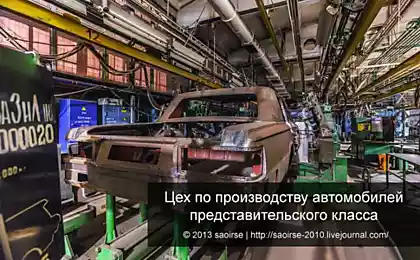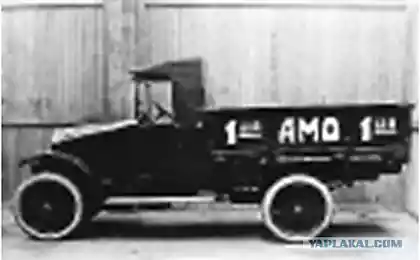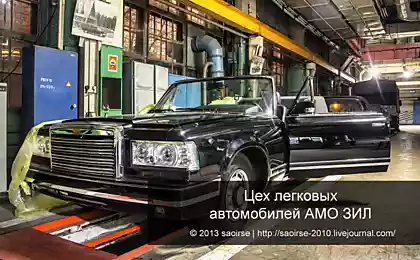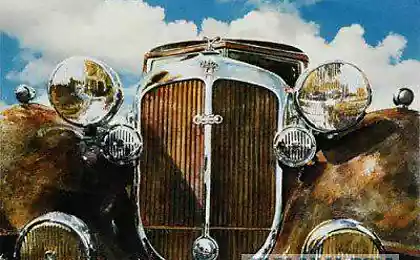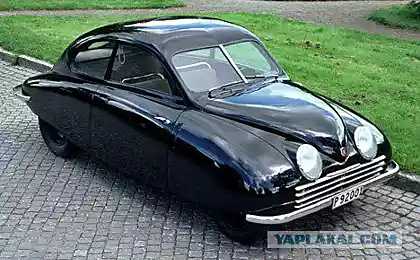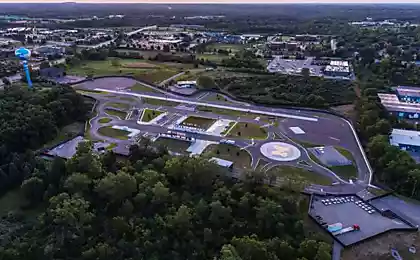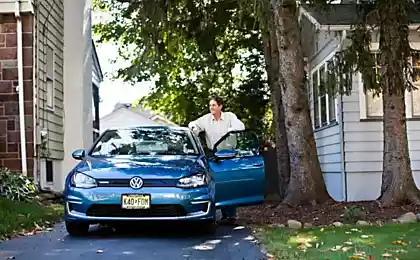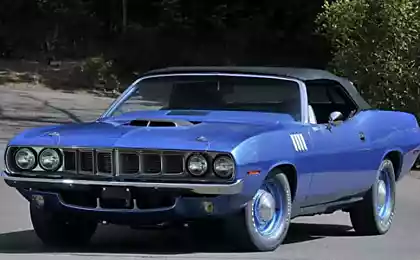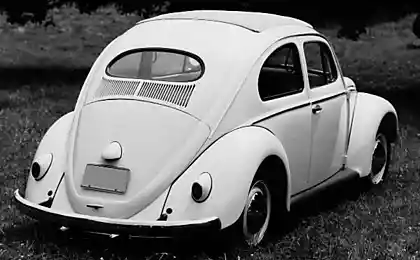996
10 flying cars (11 photos)
Sci-fi story would be incomplete without the main attributes of the genre - laser weapons, robots and, of course, flying cars. The main difference between these miracle machines that on the ground they feel as comfortable as in the air. These vehicles are no different from ordinary, except for the ability to fly, if you press the correct button.
The 20th century brought us a lot of innovation, and it is not surprising that there were attempts to create a flying car. Some of them were indeed ingenious inventions, the other - just ridiculous fantazёrstvom. Below you will find ten magnificent examples of flying cars, created from the beginning of the 20th century.
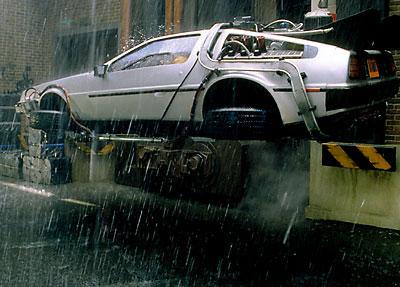
10. Avtoplan Curtis
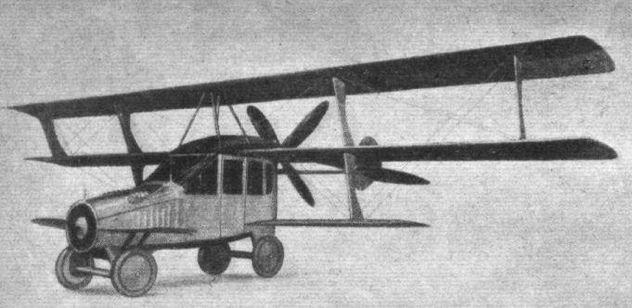
Avtoplan Curtis - the world's first flying car, not counting those that existed in the pages of fiction. In 1917, the aviation engineer Glen Curtis has created its own design of the aircraft and the Ford Model T. The plane, which was founded design, called Mock L, triplane (three rows of wings) with an engine of a hundred horsepower (as a decent tractor). < br />
Two front wheels, as well as in the car, turned using the steering wheel in the cockpit. To move the car on the ground and in the air was with the propeller mounted behind. Unfortunately, this "air limousine" never flew, all the estimates the most that he could - a few short hops. At the beginning of the First World War this machine altogether abandoned.
9. Flying Car Jesse Dixon

This flying car - almost a legend, and in addition to this picture and a brief mention of the vehicle in the newspaper Andalusia, Alabama, there is no evidence of its existence. The note says that the photo was captured Jess Dixon, it was made somewhere around 1940. Although aviation history buffs believe this car flying car, but it is closer to the "driving the helicopter," because the top two blades rotating in opposite directions.
The car was powered by a small engine 40 horsepower and foot pedal controlled tail blade that can be rotated in the air. Presumably, the car developed a speed of 100 miles per hour (160 km / h) and can fly forward, backward, turn and soar. Not bad for a flying car, which, in consequence, no longer hear anything.
8. ConvAirCar or "Winged Wheels»
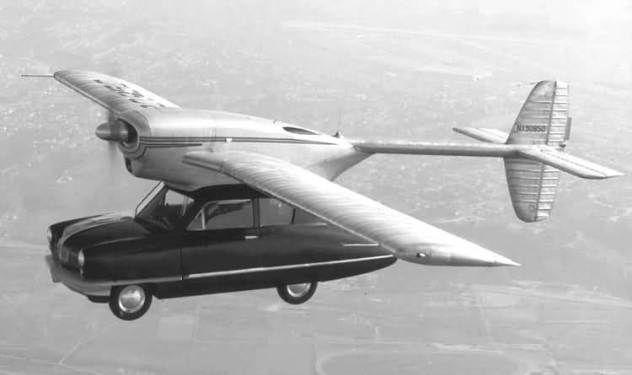
Model 116 "Winged wheel" took off for the first time in 1946, and looked like a small airplane, welded to the car. In fact, it was so. The wings, tail and propeller could be detached from the vehicle, turning it into an ordinary ground vehicle. Details of the aircraft in case of off-road there.
At 116 model was the only one prototype, which carried out 66 missions. A few years later, the designer Ted Hall has recreated this car as a model 118, replacing the engine 130 horsepower more powerful - in 190, it gave the vehicle more opportunities in the air. Convair company planned to start mass production and to start to produce 160,000 of these cars, but that never came to pass because of the disaster with the prototype in California. When the pilot lifted the car into the air, he thought that the fuel tank is full. But this machine had two units, showing the fuel level - one for the car, the other - for the plane, and while the tank car was really full, the fuel for the aircraft ran straight into the air. This is the danger of multitasking.
7. VZ- 7 Curtis Wright
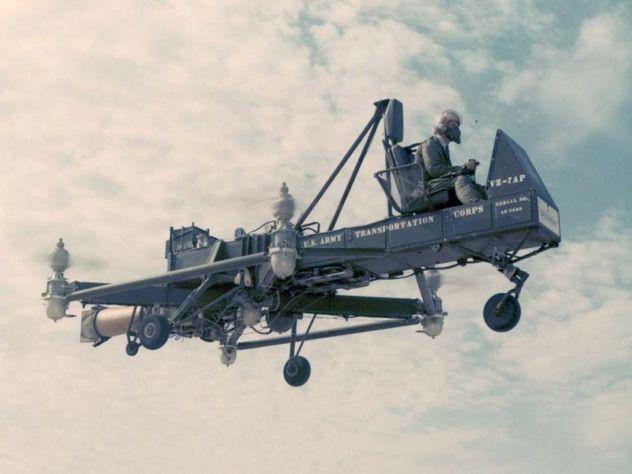
VZ -7 Curtis Wright - is one of the first attempts of US military forces engaged in manufacture of flying cars. Ideally, VZ-7 was supposed to be something like a flying jeep. As the SUV, he had to allow the driver to overcome the difficult terrain on earth, but with a little bonus - the ability to fly. It was designed by "Curtis-Wright," which was formed after the merger of the company "Wright" (Wright brothers) and "Curtis Aeroplane" (Glen Curtis). In the early days of aviation and Curtis Wright brothers were fierce competitors.
VZ- 7 was designed as a vehicle with vertical take-off and landing. He flew with the help of four vertical propellers, placed behind the cockpit, which, in general, is a completely open space. To make maneuvers the pilot may change the speed of the individual propellers tilt them forward, backward or sideways. However, the whole car was essentially a death trap, because no propellers are protected. Barely two years after the launch, in 1960, the Army banned the project.
6. Eyrdzhip Piasecki (Piasecki AirGeep)
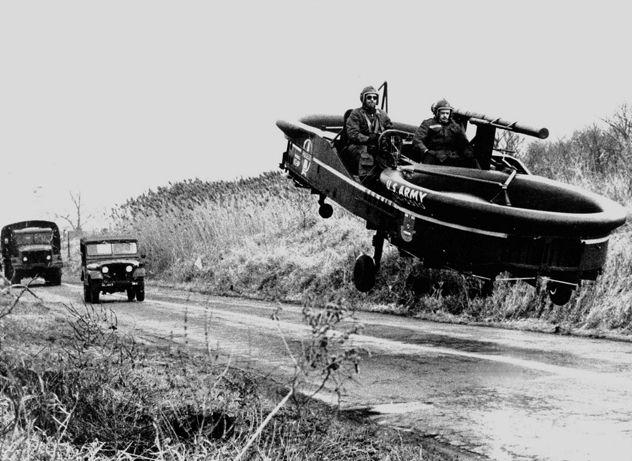
When the VZ-7 landed permanently, the army turned to a completely different prototype: Piasecki VZ-8 AirGeep. It will be appreciated that by this time the helicopters have become popular, but military forces were interested in something simpler than a helicopter, so that you can reduce the period of study.
AirGeep went through seven different versions before finally was declared unfit for military use, but they kept the basic design: two large vertical propeller in front and behind, in the middle - seat pilot and three or four wheels for land movement. The very first model was flat, later models have sprung up in front and behind, recalling the form of letters V. Navy even tried one of the models equipped with floats to use it on the water, but eventually the idea was abandoned, and the whole program too.
5. AVE Mizar

In 1971, California's famous engineering company «Advanced Vehicle Engineers» decided to design a flying car that would remind "Winged wheel" 1940. They took a Ford Pinto and welded to the roof of a light aircraft Cessna Skymaster. The result was a bizarre hybrid that called AVE Mizar.
Half of the unit, which was the car practically no different from an ordinary Ford Pinto, driving through the streets. The engine of Ford clocked the plane to the desired speed for takeoff, then started working propellers. After landing the brakes helped to slow down. Unfortunately, in 1973 - just a year before was due to begin mass production of such cars - the right wing of one of the experimental samples fell off in mid-air. The car crashed to the ground, dragging and all its possible future.
4. Heavenly supermototsikl
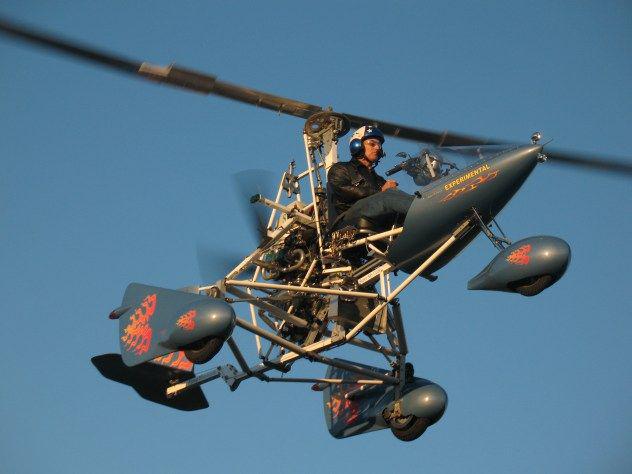
Speaking of the present, it is amazing how we are still far from making this flying car. Here's a good example: a heavenly bike "Butterfly", which is slightly different from the flying car of the legendary Jesse Dixon. As the embodiment of '40s, flying motorcycle is an SUV with a rotating propeller and a tail to control the direction of flight.
Flying motorcycle was constructed in 2009 and today it can drive anyone who has a license to drive a motorcycle and a pilot's license. At length it is approximately 2 to 1 meter, allowing it to fit practically any garage. Such girolёty company produces Butterfly Aircraft LLC and sells as a kit for the assembly, which is quite possible to assemble at home. Maybe it's a little something about what most people think, imagining flying car, but they are available to anyone who has an extra $ 40 000.
3. Bar Terrafudzhiya (Terrafugia Transition)
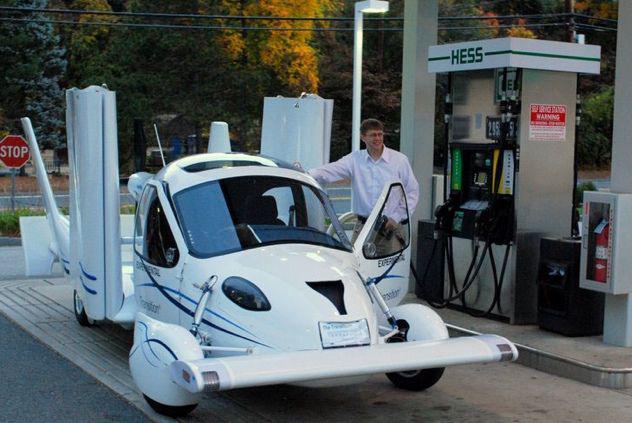
In 2009 Terrafudzhiya made its first test flight. Since then, he has gone through many renovations and upgrades, poured out a few completely new designs and the second test flight in 2012. In any case, this flying machine offers something very futuristic. It has the shape of an airplane with wings that fold and take the vertical position while the vehicle is on the ground. On the road it can reach speeds of up to 110 km / h to 185 km / h - in the air.
The only problem faced by the company in the course of construction, is that the car was too heavy to meet the requirements of the FAA (Federal Aviation Agency) for devices for safety on the road (bumpers, airbags, etc.). In 2010, the FAA has allowed designers to step back from some of the rules, which changed the classification of the vehicle and facilitate obtaining a pilot's license. Unfortunately, this car is still worth more than a Lamborghini.
2. Flying car PAL-V One
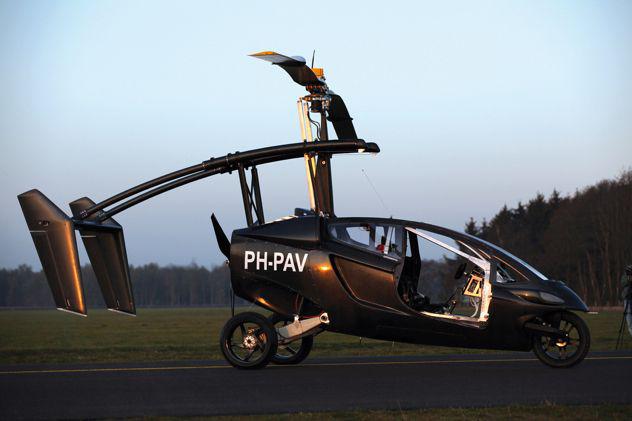
Dutch design PAL-V One is making the necessary style and huge changes in the traditional format girolёtov. Take at least an engine that automatically switches between the tires and the propeller, depending on whether there is contact with the ground.
Especially interesting is that it is designed to fly at an altitude of no more than 1200 meters, that is, you do not have to file flight plan to use them, and it is a huge obstacle to the flying cars of our time. All this may eventually lead to a "digital corridors" running GPS and invisible to the tracks in the sky that will enable air traffic to be organized as a conventional highway.
1. UAV Air mule (AirMule)
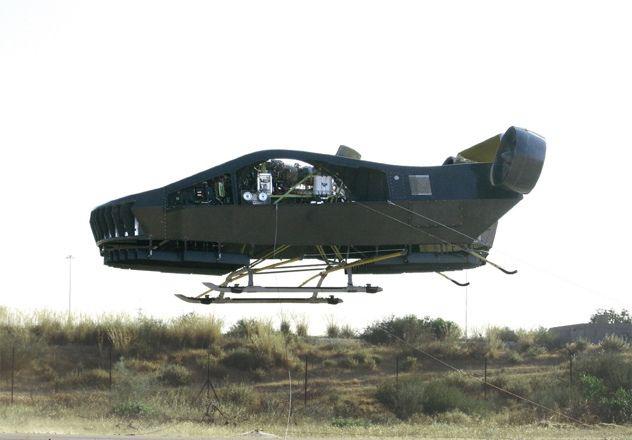
AirMule more like a board the ambulance than a car, but the idea is the same. It was designed by an Israeli company "Urban Aeronautics." The main purpose of this machine - assistance in search and rescue. It can reach the same speed as a conventional helicopter, but it takes 2 times less air space, so it can penetrate into places inaccessible to the helicopter.
You might say that this car is like a Eyrdzhip who tried to create the US military in the '70s. But it has one major difference: it is operated remotely. AirMule really drone, which means either that it will save lives, or - destroy. In any case, it will not necessarily be controlled by an autopilot. Urban Aero plans to use the remote pilot and flight management tools in real time - a bit like the control plane in the light videogame.
The 20th century brought us a lot of innovation, and it is not surprising that there were attempts to create a flying car. Some of them were indeed ingenious inventions, the other - just ridiculous fantazёrstvom. Below you will find ten magnificent examples of flying cars, created from the beginning of the 20th century.

10. Avtoplan Curtis

Avtoplan Curtis - the world's first flying car, not counting those that existed in the pages of fiction. In 1917, the aviation engineer Glen Curtis has created its own design of the aircraft and the Ford Model T. The plane, which was founded design, called Mock L, triplane (three rows of wings) with an engine of a hundred horsepower (as a decent tractor). < br />
Two front wheels, as well as in the car, turned using the steering wheel in the cockpit. To move the car on the ground and in the air was with the propeller mounted behind. Unfortunately, this "air limousine" never flew, all the estimates the most that he could - a few short hops. At the beginning of the First World War this machine altogether abandoned.
9. Flying Car Jesse Dixon

This flying car - almost a legend, and in addition to this picture and a brief mention of the vehicle in the newspaper Andalusia, Alabama, there is no evidence of its existence. The note says that the photo was captured Jess Dixon, it was made somewhere around 1940. Although aviation history buffs believe this car flying car, but it is closer to the "driving the helicopter," because the top two blades rotating in opposite directions.
The car was powered by a small engine 40 horsepower and foot pedal controlled tail blade that can be rotated in the air. Presumably, the car developed a speed of 100 miles per hour (160 km / h) and can fly forward, backward, turn and soar. Not bad for a flying car, which, in consequence, no longer hear anything.
8. ConvAirCar or "Winged Wheels»

Model 116 "Winged wheel" took off for the first time in 1946, and looked like a small airplane, welded to the car. In fact, it was so. The wings, tail and propeller could be detached from the vehicle, turning it into an ordinary ground vehicle. Details of the aircraft in case of off-road there.
At 116 model was the only one prototype, which carried out 66 missions. A few years later, the designer Ted Hall has recreated this car as a model 118, replacing the engine 130 horsepower more powerful - in 190, it gave the vehicle more opportunities in the air. Convair company planned to start mass production and to start to produce 160,000 of these cars, but that never came to pass because of the disaster with the prototype in California. When the pilot lifted the car into the air, he thought that the fuel tank is full. But this machine had two units, showing the fuel level - one for the car, the other - for the plane, and while the tank car was really full, the fuel for the aircraft ran straight into the air. This is the danger of multitasking.
7. VZ- 7 Curtis Wright

VZ -7 Curtis Wright - is one of the first attempts of US military forces engaged in manufacture of flying cars. Ideally, VZ-7 was supposed to be something like a flying jeep. As the SUV, he had to allow the driver to overcome the difficult terrain on earth, but with a little bonus - the ability to fly. It was designed by "Curtis-Wright," which was formed after the merger of the company "Wright" (Wright brothers) and "Curtis Aeroplane" (Glen Curtis). In the early days of aviation and Curtis Wright brothers were fierce competitors.
VZ- 7 was designed as a vehicle with vertical take-off and landing. He flew with the help of four vertical propellers, placed behind the cockpit, which, in general, is a completely open space. To make maneuvers the pilot may change the speed of the individual propellers tilt them forward, backward or sideways. However, the whole car was essentially a death trap, because no propellers are protected. Barely two years after the launch, in 1960, the Army banned the project.
6. Eyrdzhip Piasecki (Piasecki AirGeep)

When the VZ-7 landed permanently, the army turned to a completely different prototype: Piasecki VZ-8 AirGeep. It will be appreciated that by this time the helicopters have become popular, but military forces were interested in something simpler than a helicopter, so that you can reduce the period of study.
AirGeep went through seven different versions before finally was declared unfit for military use, but they kept the basic design: two large vertical propeller in front and behind, in the middle - seat pilot and three or four wheels for land movement. The very first model was flat, later models have sprung up in front and behind, recalling the form of letters V. Navy even tried one of the models equipped with floats to use it on the water, but eventually the idea was abandoned, and the whole program too.
5. AVE Mizar

In 1971, California's famous engineering company «Advanced Vehicle Engineers» decided to design a flying car that would remind "Winged wheel" 1940. They took a Ford Pinto and welded to the roof of a light aircraft Cessna Skymaster. The result was a bizarre hybrid that called AVE Mizar.
Half of the unit, which was the car practically no different from an ordinary Ford Pinto, driving through the streets. The engine of Ford clocked the plane to the desired speed for takeoff, then started working propellers. After landing the brakes helped to slow down. Unfortunately, in 1973 - just a year before was due to begin mass production of such cars - the right wing of one of the experimental samples fell off in mid-air. The car crashed to the ground, dragging and all its possible future.
4. Heavenly supermototsikl

Speaking of the present, it is amazing how we are still far from making this flying car. Here's a good example: a heavenly bike "Butterfly", which is slightly different from the flying car of the legendary Jesse Dixon. As the embodiment of '40s, flying motorcycle is an SUV with a rotating propeller and a tail to control the direction of flight.
Flying motorcycle was constructed in 2009 and today it can drive anyone who has a license to drive a motorcycle and a pilot's license. At length it is approximately 2 to 1 meter, allowing it to fit practically any garage. Such girolёty company produces Butterfly Aircraft LLC and sells as a kit for the assembly, which is quite possible to assemble at home. Maybe it's a little something about what most people think, imagining flying car, but they are available to anyone who has an extra $ 40 000.
3. Bar Terrafudzhiya (Terrafugia Transition)

In 2009 Terrafudzhiya made its first test flight. Since then, he has gone through many renovations and upgrades, poured out a few completely new designs and the second test flight in 2012. In any case, this flying machine offers something very futuristic. It has the shape of an airplane with wings that fold and take the vertical position while the vehicle is on the ground. On the road it can reach speeds of up to 110 km / h to 185 km / h - in the air.
The only problem faced by the company in the course of construction, is that the car was too heavy to meet the requirements of the FAA (Federal Aviation Agency) for devices for safety on the road (bumpers, airbags, etc.). In 2010, the FAA has allowed designers to step back from some of the rules, which changed the classification of the vehicle and facilitate obtaining a pilot's license. Unfortunately, this car is still worth more than a Lamborghini.
2. Flying car PAL-V One

Dutch design PAL-V One is making the necessary style and huge changes in the traditional format girolёtov. Take at least an engine that automatically switches between the tires and the propeller, depending on whether there is contact with the ground.
Especially interesting is that it is designed to fly at an altitude of no more than 1200 meters, that is, you do not have to file flight plan to use them, and it is a huge obstacle to the flying cars of our time. All this may eventually lead to a "digital corridors" running GPS and invisible to the tracks in the sky that will enable air traffic to be organized as a conventional highway.
1. UAV Air mule (AirMule)

AirMule more like a board the ambulance than a car, but the idea is the same. It was designed by an Israeli company "Urban Aeronautics." The main purpose of this machine - assistance in search and rescue. It can reach the same speed as a conventional helicopter, but it takes 2 times less air space, so it can penetrate into places inaccessible to the helicopter.
You might say that this car is like a Eyrdzhip who tried to create the US military in the '70s. But it has one major difference: it is operated remotely. AirMule really drone, which means either that it will save lives, or - destroy. In any case, it will not necessarily be controlled by an autopilot. Urban Aero plans to use the remote pilot and flight management tools in real time - a bit like the control plane in the light videogame.


